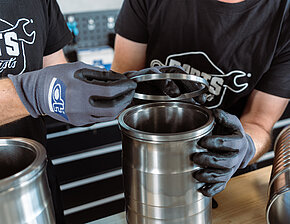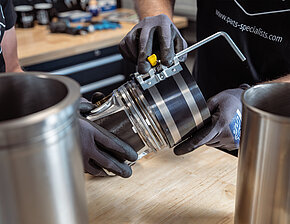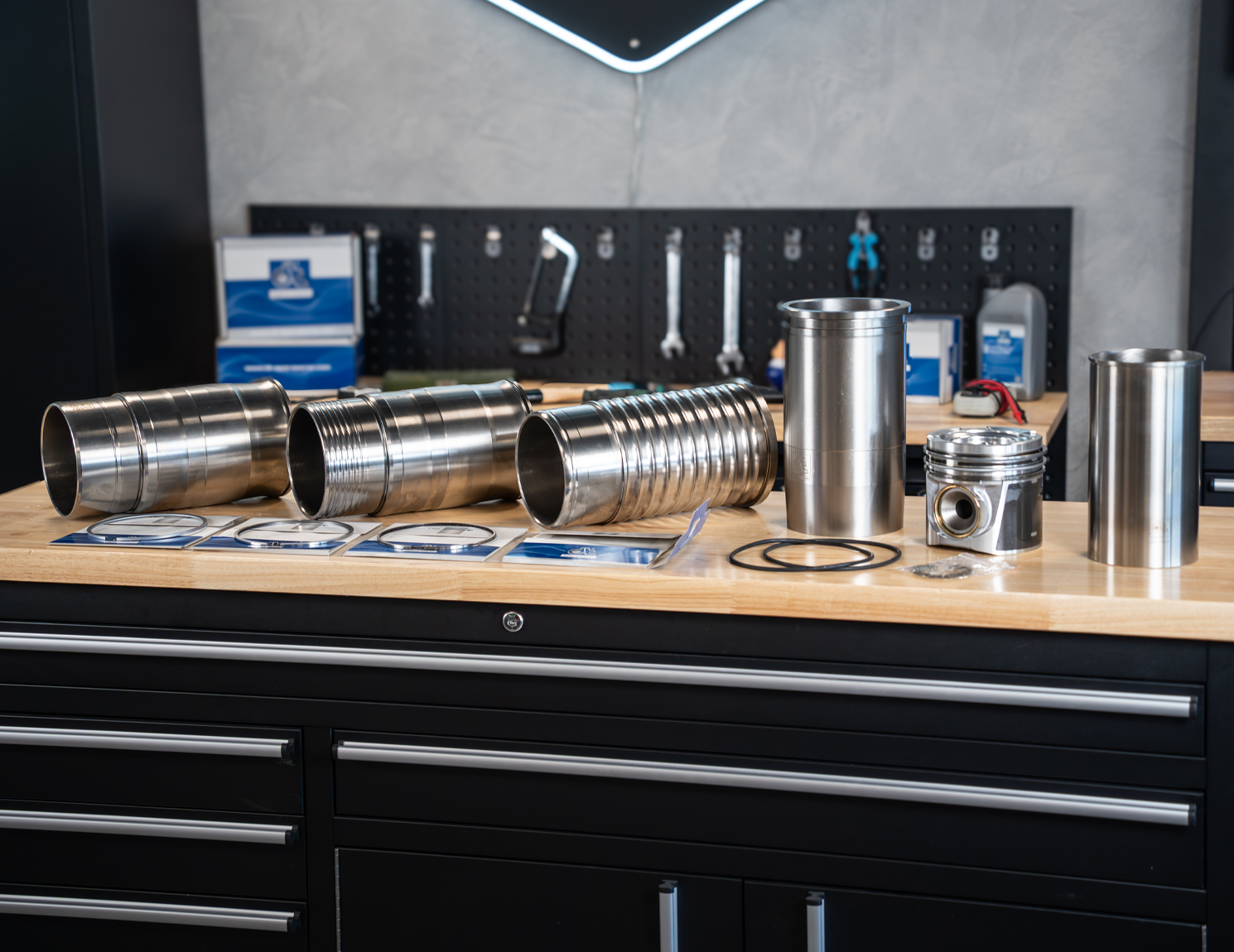Product Portrait
Piston liners
suitable for: DAF, Ford, Isuzu, Iveco, MAN, Mercedes-Benz, Renault, Scania, Volvo, VW etc.
Over 300 piston liners & co. available
DT Spare Parts offers various types of piston liners. Dry piston liners have a flat external wall and are inserted directly into the engine block; they are not in direct contact with the coolant. In contrast, “wet” piston liners have cooling ribs on the external wall, allowing the coolant to circulate between the engine block and the piston liner, ensuring improved heat dissipation. Furthermore, certain liners have an integrated fire ring with a slightly smaller diameter than the running surface. This serves to scrap combustion residues such as carbon particles from the piston and remove them via the exhaust valve – a practical solution for vehicles that are subject to high thermal and mechanical loads.
Cross-grinding and exact measuring
A key feature of all piston liners is the cross-grind. “This special surface structure ensures an even, smooth running surface on which the piston rings can work optimally”, explains Niklas. At the same time, the cross-grind ensures that a fine lubricating film remains, which ensures smooth movement of the piston. The angle of the cross-grind is specified by the manufacturer and must be carefully checked during repairs around the combustion and compression chamber. Insufficient compression and increased oil consumption are among the signs of wear on the grind. If regrinding is necessary, special tools are used, followed by precise measurement of the cylinder running surface. “First, the target measurement is set using a micrometer, then the internal dial gauge is calibrated”, Niklas explains in PS Tip. If the measuring pointer moves above 0 (the 0 on the measuring pointer describes the previously set target measurement), the cylinder running surface is undersized; if the pointer remains below 0, there is oversize. This can indicate thermal overload or wear. In this case, a decision must be made as to whether reworking or replacement of the liner is necessary.




Safe packaging and storage
To ensure that the products arrive undamaged and free of corrosion, the piston liners are packaged in several stages: basic oiling of the item, corrosion protection paper, waterproof plastic bag and a sturdy cardboard layer ensure that the product is protected. The box also contains a note that the pistion liners must always be stored vertically to prevent deformation.
If you have any technical questions about Diesel Technic products and services, the Parts Specialists can be contacted via their own HelpDesk and offer the right support: helpdesk.parts-specialists.com.
